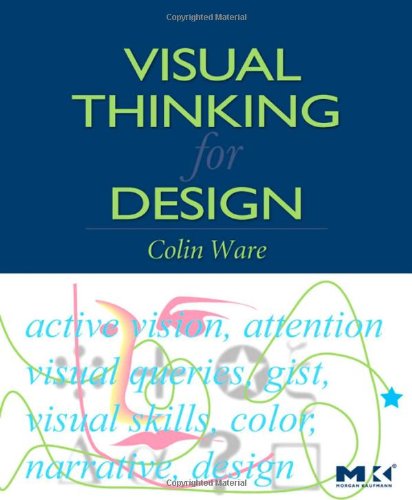Visual Thinking: for Design ebook download
Par crawford elizabeth le vendredi, janvier 27 2017, 20:02 - Lien permanent
Visual Thinking: for Design. Colin Ware

Visual.Thinking.for.Design.pdf
ISBN: 0123708966,9780123708960 | 198 pages | 5 Mb

Visual Thinking: for Design Colin Ware
Publisher: Morgan Kaufmann
Visual Thinking by Rudolf Arnheim, Recommended by Milton Glaser. Reason, design and communicate. Well, the sides of the brain actually play a significant role in design, as well as in marketing. My passion (or perhaps facination with/for) for design stems from my appreciation for art, structure, and creativity. It's just that the fixed semantics that make them so useful for design can be restricting when you're trying to figure out what it actually is that you're “seeing”. This revolution's “tipping point” came earlier this year at the International Forum for Visual Practitionersannual conference, which drew 100 visual practitioners from across the globe. I've been lucky enough to be able to plan and collaborate taching two classes for h2i, first year I did Visual Thinking with Mr. � Casual He also adds that by providing dedicated project spaces that encourage collaborative activities and visual thinking makes a big difference. What if I asked you to build me a dresser 100cm tall with five drawers for socks that were 40cm long x 15cm high x 65cm deep? This is what we care about: Design with process and intent. Visual Thinking: for Design (Morgan Kaufmann Series in Interactive Technologies) book download. With no end in site for the excitement surrounding design as a strategic competence, visual thinking is riding the coattails of IDEO and Stanford's d. I'm not against visual languages. Everyone has to pitch their ideas to the lead designer and decide their direction from there. �Designers need these introductions for their work – Milton Glaser”. You approach design problems systematically from multiple angles, understanding there are pros and cons to all solutions. �Design Mania” becomes a movement. This competition investigates, explores and emphasises the importance and function of sketching or drawing as visual thinking in design and how it supports design reasoning. I know you're thinking; what does this have to do with design? The discussion in the comments raises many important points, and provides many useful pointers (thanks especially to Peter Bakker) to resources, that help us explore and understand the role of visual thinking and visualization in architecting.